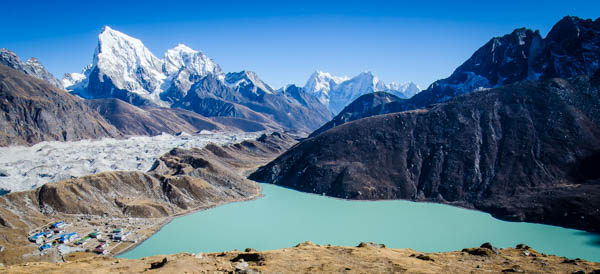EBC Day 03 - Boudhanath & Pashupatinath
EBC Index
Boudhanath Temple
The cycle to Boudhanath (Nepali : बुद्ध स्तुपा)

I ended up bringing the mountain bike that I had rented into the complex as there seemed to be nowhere that I could lock it up safely outside, as the entrance to Boudha was just off the main street. The entrance fee cost NPR150. From the entrance I walked the mountain bike through the alley, and the complex just opened up before my eyes with the massive Boudhanath stupa and its imposing scale dominating the center of the courtyard. Tourists and locals alike just stared at me and the mountain bike (as most take taxis or vans to get to Boudhanath) so the first thing I did was to find a place where I could safely leave the bike.


Once I moved into the courtyard, I was quickly caught up in the throngs of both worshipers and tourists who were all circumambulating the stupa in a clockwise direction. Witnessing the devotion and hearing the bells and sombre chanting of monks in unison from the nearby Tsamchen Gompa made the entire experience somewhat powerful.


It dawned on me then how those who lack the education and awareness can attribute such an experience to the divine, somewhat akin to those who go on the hajj or any other mass ritual of other religions. I suppose the main reason would be how rituals such as this tend to reinforce social homogeneity by strengthening the group identity either through the emphasis of a common purpose or the repetitive acts of the ritual itself. This also seems to be the case for non-religious rituals such as those practiced in university fraternities and exclusive clubs.
After wondering on and around the stupa, I found a quaint little cafe where I could take some time off for some well-deserved recuperation. Strangely enough, the cafe itself seemed to have a Japanese theme and was called Mochiko Food. I spent NPR160 eating the always delightful buff momo whilst sipping hot coffee. During this time however, an elderly man approached the tiny table and sat down across from me without uttering a single word. The man looked harmless enough but kept on staring at the momos that I was eating which was fairly unnerving. I came to the obvious conclusion that he wanted some food so I offered him one of the momos but to my surprise he declined by just smiling and shaking his head. His coffee arrived soon after and we both sat there in silence sipping away at our coffees.
Next (Day 3) : Boudhanath & Pashupatinath (Part 4)
EBC Index




